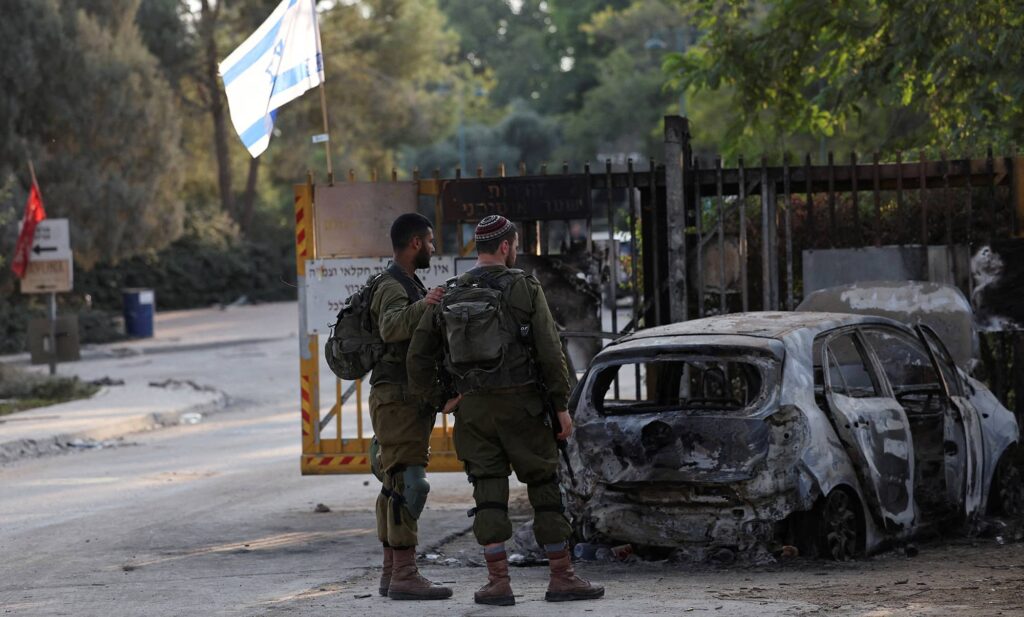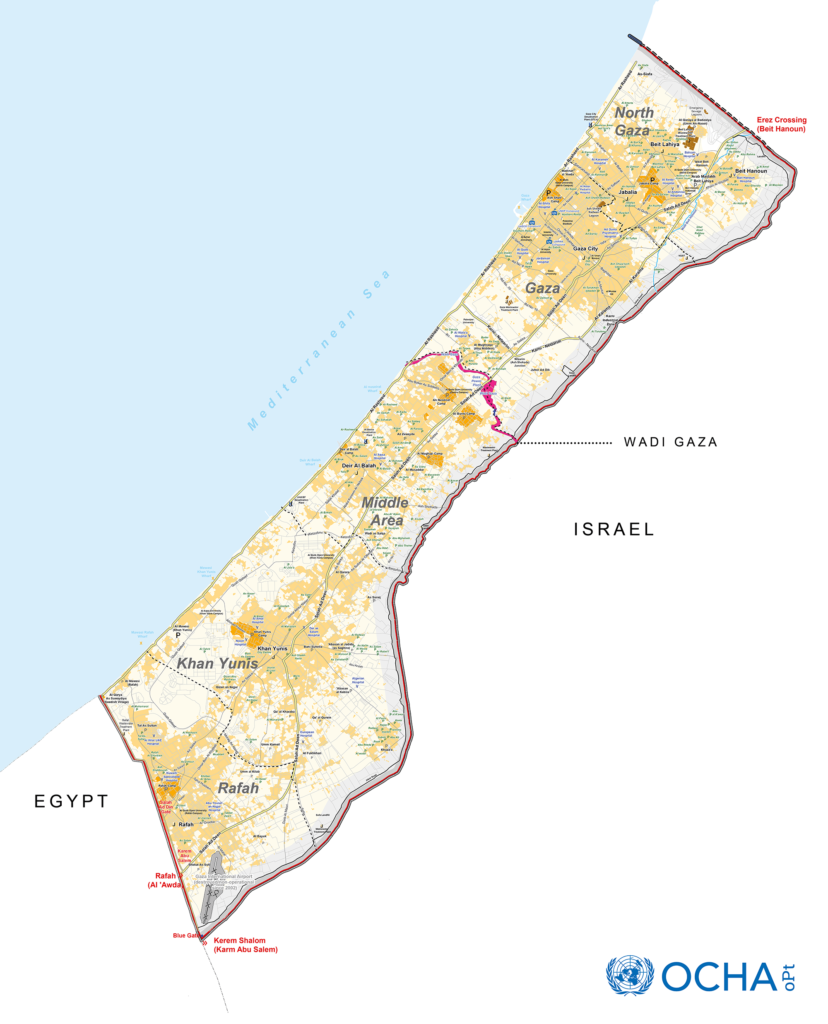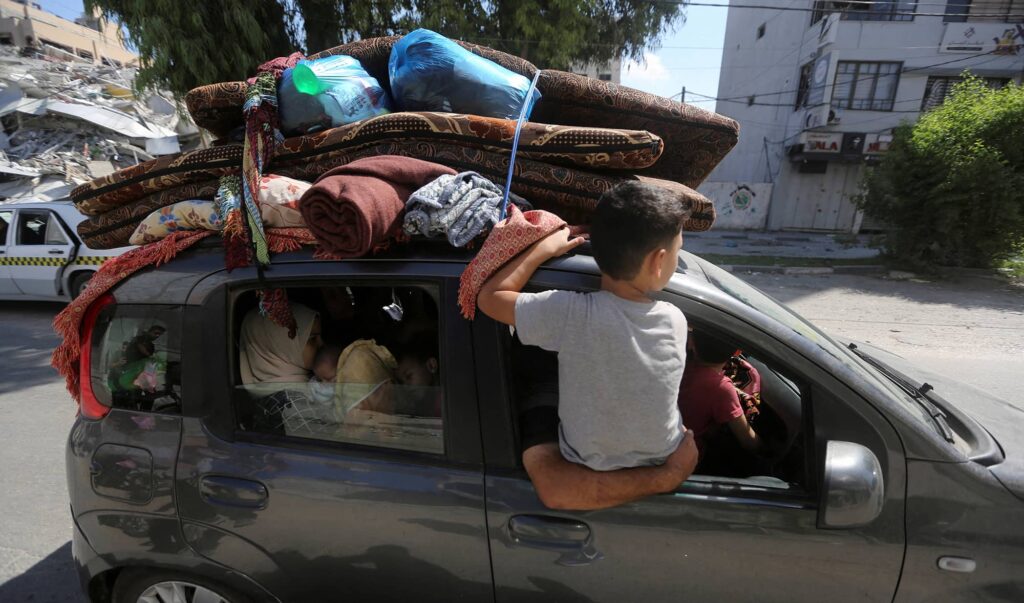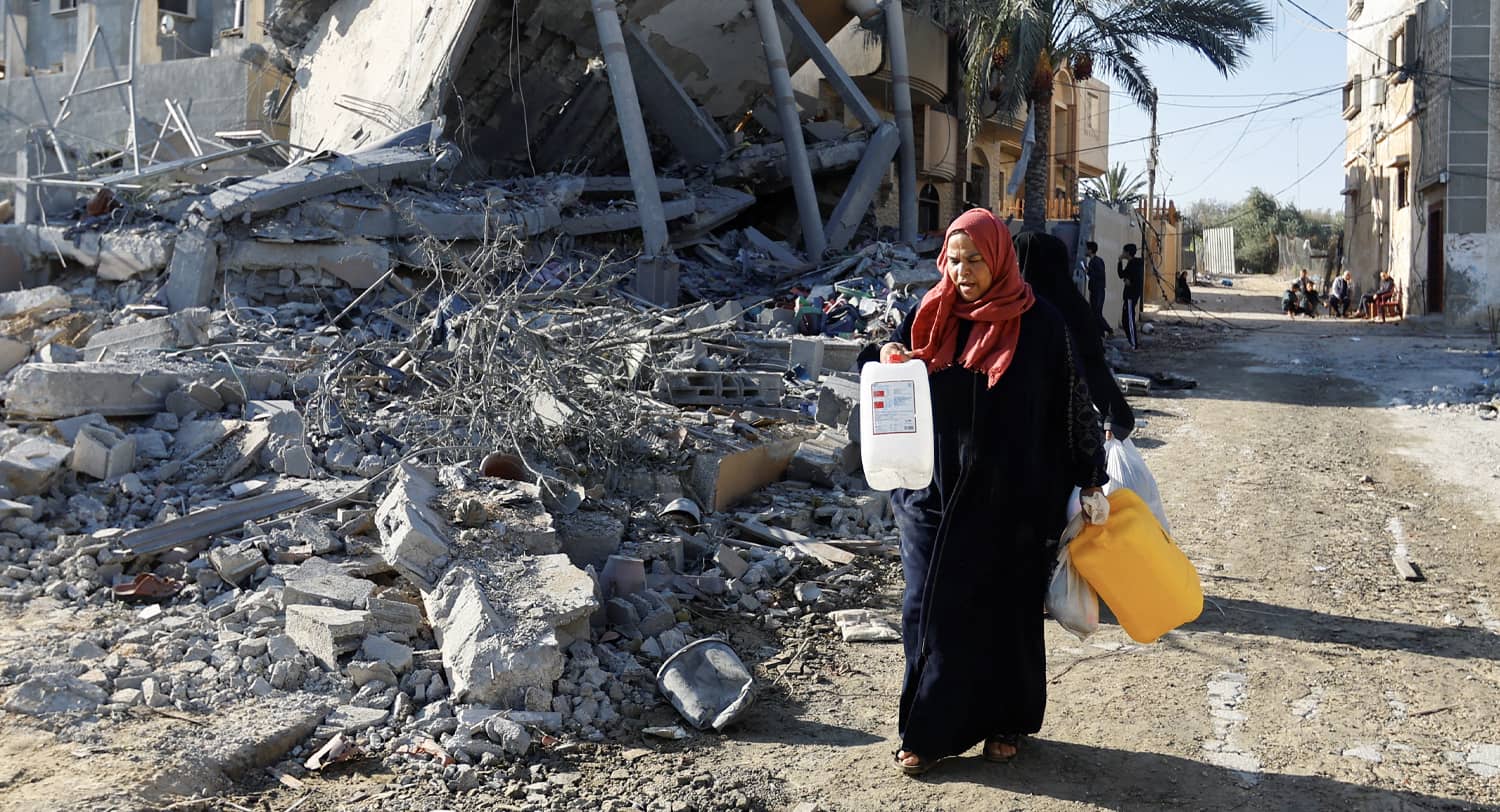Israel has correctly assessed the October 7 attack as an existential threat to the state. To be sure, Hamas could never overrun Israel. But if Hamas remains capable of such attacks, possibly coordinated next time with the greater military threats of Lebanese Hezbollah, Syria, and Iran, Israel could be pushed to the brink (as nearly happened in 1973).
Surely Jerusalem will not be caught by surprise a third time. But avoiding surprise would require permanent mobilization, which would be detrimental to Israel’s future. Thus Israel’s officially announced war goal—destroy Hamas’ capability for offensive operations and remove it from the governance of Gaza—is the only real option.
Israel faces, however, three major risks.
The first is that a wider war could ensue. Israel’s mass mobilization reduces the risk of Hezbollah or other enemies intervening, but it cannot be ruled out. President Biden’s commitment, backed up by major force deployments, also mitigates this risk.
The second is that heavy Israeli Defense Force (IDF) casualties – fighting block by block through Gaza City – along with the danger to the many hostages could together deter full execution of Israel’s war goals. These are choices only Israel can make.
The third is the impact of Gazan civilian casualties on Israel’s military operations, particularly if civilian casualty numbers produce outrage sufficient to shift the Biden administration’s current total support for Israel and thereby place IDF resupply and other support in question.
One of the many questions about October 7 was why Hamas took an action that would expose it to the unquestioned capability of Israel to then destroy it. One of perhaps several answers could be that Hamas thought that Israel would lose the intention to destroy it because of inevitable international blowback from civilian casualties. Precedents from past Middle Eastern conflicts, contradictory positions by US administration officials, and media attention on the dire Gaza civilian situation increasingly drowning out reporting on the horrendous slaughter of Israeli civilians, all suggest that this risk of international blowback needs to be taken seriously.

But two caveats are in order on this very sensitive subject. First, civilians whether Israeli or Palestinian are innocent. They should never be targeted, and whenever feasible, should be protected. Second, there is a danger of moral equivalence, particularly prevalent in some Western circles and the Arab world. There were practical problems with the initial October 13 Israeli alert for Gaza civilians to displace south of the Wadi Gaza line, but undoubtedly the Israeli civilians killed, wounded or seized on October 7 would have appreciated such an alert from Hamas.
Both American and Israeli military operations in the broader Middle East have faced international outcry over civilian casualties. The first American offensive into the city of Fallujah in 2004 was halted following criticism both in the American media and by the Iraqi Governing Council. The second offensive in October 2004 was condemned in advance by the UN Secretary General, and only the Arab world’s focus on Yasser Arafat’s death in the same week as the battle limited the impact. The “shock and awe” air strikes against Iraq in 2003 generated much international criticism, as did an American strike on a hospital in Afghanistan, and more recently air strikes against the Islamic State in Baghuz, Syria.
Importantly, apart from the first Fallujah attack, the United States in each case continued its military operations despite the international criticism.
While international opposition to Israeli actions is common, what is most relevant is how Washington reacts, and here the record is mixed. The frequent fallings out over civilian casualties between Washington and Jerusalem result from a number of factors: the commendable priority most Americans following foreign policy place on humanitarian issues; the differences between Israel and most US administrations on West Bank policies; and Washington’s need to balance relations with Israel with those of Arab states also important to US policy. We saw this in the 2008 and 2014 Gaza conflicts, but most notably during the 2006 Lebanon war. Secretary of State Condoleezza Rice in her book No Higher Honor spells out the administration’s concern about civilian casualties and in the end President Bush’s determination to halt the Israeli operation.
The difference between those prior conflicts and the current Gaza war is critical. For Israel this is an existential conflict. That means different rules apply, those of the world of war – which the Ukrainian President could eloquently explain. President Biden and Secretary Blinken appear to get this, judging from their extraordinarily strong language and military moves in support of Israel.
As the Ukrainian president could also explain, Western publics and governments traditionally have problems understanding the world of war. Prioritizing absolutely the safety of civilians and stopping the shooting are usually good instincts in the world of peace in which the West normally lives. But that is not Israel’s world today.
President Biden, while reiterating admirably total support for Israel, keeps returning to the need to adhere to the laws of war. And Secretary Blinken in a joint press conference with Prime Minister Netanyahu not only stressed Israel’s humanitarian obligations but proposed an almost impossible standard “take every possible precaution to avoid harming civilians.” Taken literally, Blinken’s statement could imply concern with a bloody ground offensive.
One can argue that these are the usual pro-forma American expressions of concern, but there are other signs that the Biden administration is conflicted. After the Hamas attack, Secretary Blinken and his Palestinian Affairs office tweeted language suggesting the US supported a ceasefire or de-escalation of violence. The tweets were pulled, but according to the Huffington Post the State Department then had to issue guidance on October 13 ordering officials not to use “ceasefire/de-escalation,” “ending violence/bloodshed” and “restoring calm,” suggesting there are still differences within the State Department. Finally, the administration’s legitimate priority of evacuating stranded Palestinian-Americans out of Gaza and returning American hostages could clash with full support of Israeli actions.
American and international media, after days of highlighting Hamas atrocities, have significantly shifted focus to Gaza civilian casualties. That’s understandable, it is the latest, significant news. But the one-sided slant of much reporting is troubling, as seen in a dust-up over an apparently single incident of several white phosphorus shells fired into Gaza. White phosphorus in fact is not prohibited by the laws of war, though it generates much media attention, as the US learned in Fallujah.
More serious has been the reaction to the Israeli call for Palestinian civilians to avoid combat by moving south of Wadi Gaza, the creek that divides the northern and southern parts of the Gaza Strip.

To be sure, the Israeli government invited harsh criticism, particularly by initially setting an unrealistic 24-hour time period for what should have been presented and seen as a humanitarian effort. But the seemingly universal condemnation of the move by humanitarian agencies in Gaza was picked up without questioning by the media. These condemnations ranged from the UN declaring such a move “impossible without devastating humanitarian consequences” to Doctors Without Borders calling the request “outrageous,” while the Palestinian Red Crescent Agency termed it “shocking and beyond belief.” No wonder that ABC News, reporting on the issue, entitled their piece “Israel Tells More than One Million Gazans to Flee South…but Is that Even Possible?.”
This writer, based on much exposure to conflicts, does not question the dire situation of the civilian population or the sincerity of those providing aid under always difficult, now dangerous conditions. But he has also been involved in multiple evacuations of civilians. It is never pretty but far better than the alternative. No media outlet the author reviewed pointed out that for most in Gaza’s north, the safe zone south of Wadi Gaza is only about ten to twelve miles away, and judging from the considerable automobile and truck traffic in Gaza, transportation for some could have been arranged.
Other media analyses also condemned the Israeli call for evacuation because those leaving have no place to go. That is correct, but under the laws of war that’s not Israel’s responsibility. Furthermore, one million Gazans live south of Wadi Gaza and Hamas could order them to take in people fleeing from the north.
The US organized civilian displacements from Fallujah in 2004 (smaller than those in Gaza) and repeatedly during the struggle against the Islamic State from 2014 to 2019. During the Syrian Civil War, some twelve million Syrians were displaced internally by Assad’s violence, some over hundreds of kilometers with initially the ground as their only shelter. Three million internally displaced people in Idlib, Syria, along the Turkish border are in many cases still living in tents or makeshift dwellings. But in all of these examples, local authorities, Iraqi, Kurdish, or Syrian opposition, supported the movements and provided minimum care.

Hamas in contrast has called on residents to stay put, obviously to use them as they have done previously as human shields to forestall an Israeli attack. Hamas is reportedly blocking travel to the Rafah border crossing with Egypt. Yet the media, in repeating the “impossible to move” argument, buttresses Hamas’ position at the expense of the Israeli effort to save lives.
Again, humanitarian agencies are correct that such a movement under emergency conditions will make an atrocious humanitarian situation worse, and it’s their job to make that clear. But while that is a significant moral and practical concern, it is not a categorical imperative or a legally binding stricture. Those agencies certainly know that displacing those who can move ten-twelve miles south is better than subjecting them to a massive Israeli ground attack. It thus appears that the implicit solution to their dilemma is no ground offensive and an end to air strikes. But that course of action would have its own dramatic humanitarian, political and moral considerations affecting the survival of the state of Israel and the security of the entire region.
The American people, and thus any American administration, has difficulties differentiating between humanitarian concerns and categorical imperatives. Administrations therefore are tempted to bridge the difference by requiring the more humane and reasonable party to forgo its legitimate interests for a vague promise of an eventual Washington “deus ex machina” solution.
What this means for Israel is that criticism out of Washington on humanitarian issues is inevitable. But what is vital is that this American criticism doesn’t degenerate into curbing operations as seen with Lebanon in 2006.
Unfortunately, this will require Israel to attend to that risk during a time of deep anguish. As Secretary of Defense Austin reiterated at a October 13 press conference in Israel, the question isn’t whether or not the IDF will adhere to the laws of war (it will), but rather whether Israel could put more attention into humanitarian issues beyond international law, in other words, the gray zones between law of war requirements and military contingency.
Here are three examples. First, was the limited use of white phosphorous worth the inevitable media blowback? Second, including water with fuel, electricity, and food on the list of items blocked from Gaza had likely the least impact on Hamas’ military capabilities but the most on human suffering. Finally, the evacuation rollout message could have been better thought out and written. Israel has since refined its message, giving Gazans more time and designating routes, as well as resuming water supply for the southern part of the Strip. But the damage was already done.
The blunt reality is, the more Israel considers humanitarian concerns, the more time, flexibility, and American administration support it will have to destroy Hamas.



